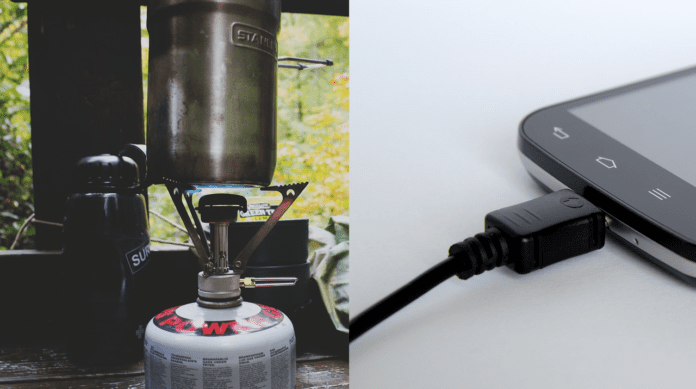This post is also available in:
 עברית (Hebrew)
עברית (Hebrew)
When you’re camping in the great outdoors, powering essential devices like phones, radios, or portable lights is a challenge. But what if the very camping stove you use to cook your meals could help keep your electronics charged? Research by Lixian Guo at the University of Canterbury is exploring how the excess heat from camping stoves can be converted into usable energy through a thermoacoustic engine (TAE), a technology that could change the way we think about power in remote environments.
Thermoacoustic engines convert thermal energy into acoustic energy, which can then be transformed into mechanical or electrical energy. According to TechXplore, These engines can be scaled to produce anywhere from a few watts to several thousand, depending on their size. Guo’s work focuses on optimizing TAEs to collect waste heat from everyday camping stoves, such as the gas burners used during outdoor trips.
Guo, presenting his research at the 187th Meeting of the Acoustical Society of America, explained the technology’s broad potential: “We have considered its applications for camping, backpacking, and emergency situations, as it can operate with any heat source, including residual heat from combustion or solar energy.” This versatility means the TAE can power devices using heat from stoves, solar panels, or even other forms of waste heat.
The implications extend beyond just outdoor enthusiasts. The research also has potential military applications, particularly for deployed soldiers. Soldiers in remote locations could use camping stoves not only for cooking but also as a power source for their critical devices, minimizing the need for bulky generators or reliance on solar panels. With a TAE, energy for radios, GPS units, or communication tools could be harvested from the heat of a stove.
Though challenges remain, particularly in optimizing efficiency and addressing energy losses, Guo views these obstacles as opportunities for further development. His ultimate goal is to establish a foundation for more efficient energy conversion systems, with applications across industries including aviation, marine engineering, and waste heat recovery.

























